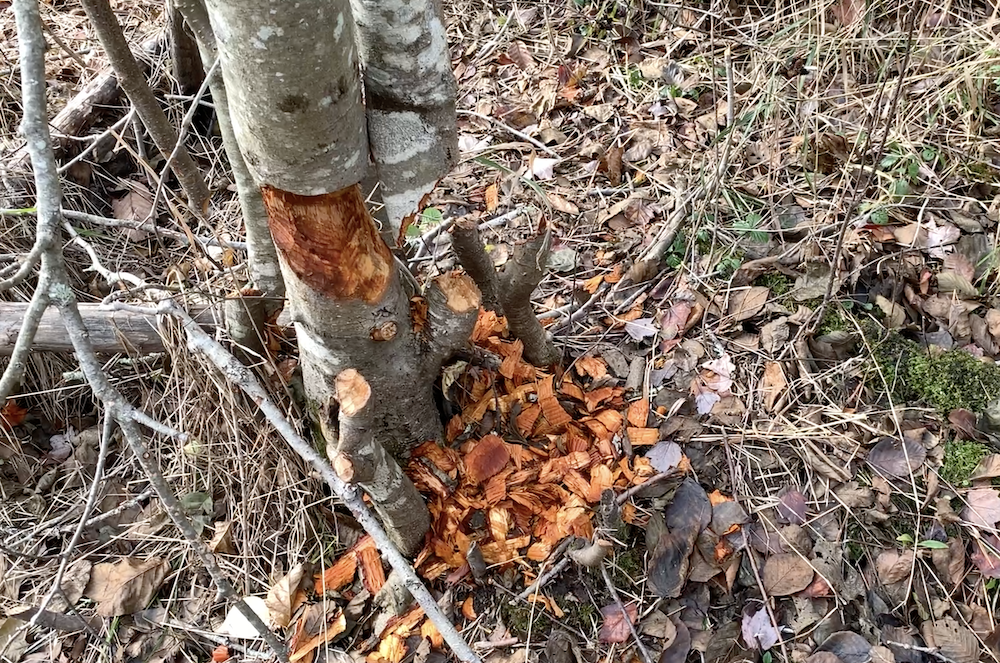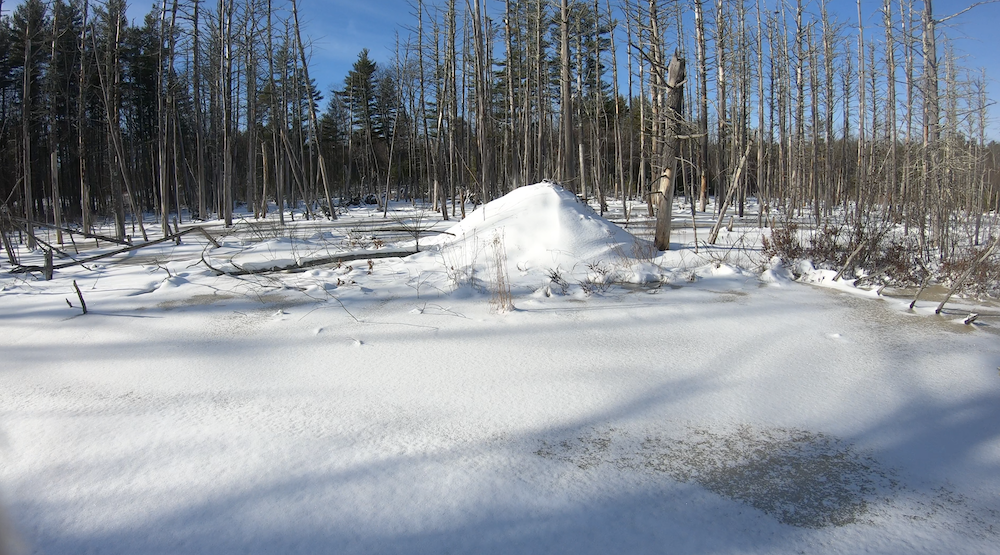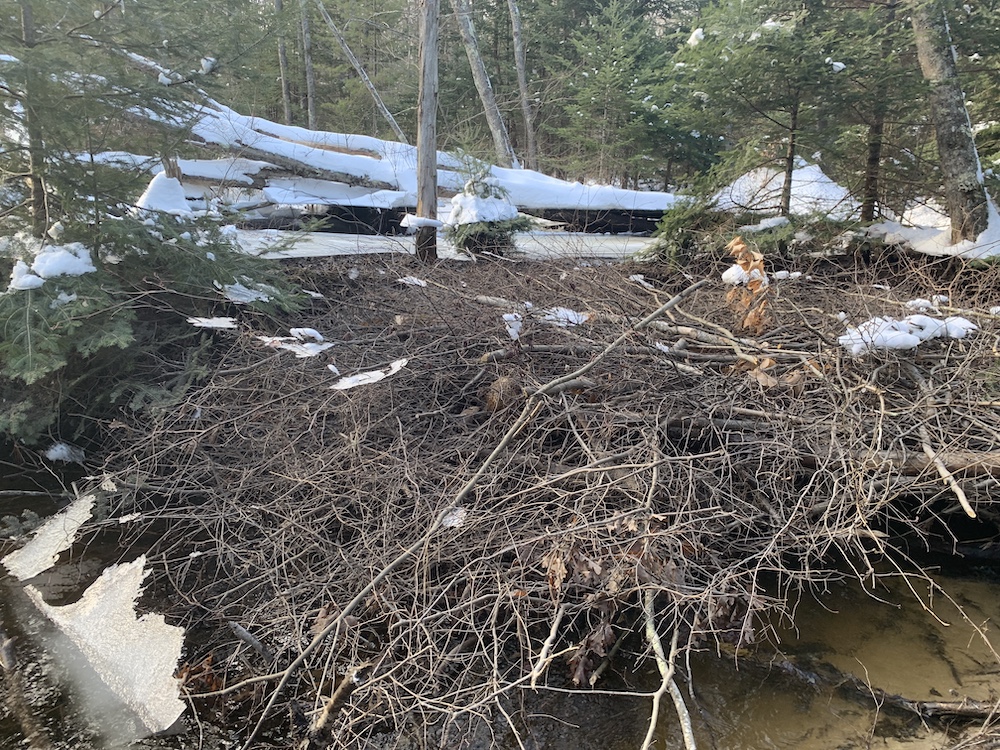Last Updated on March 24, 2024 by Jason Tome
There are a few reasons why beavers build dams. Beaver dams are an essential survival strategy for beavers because it allows them to create their own habitat instead of relying on the environment to provide it for them as most animals do. This article will dive further into beavers dams, why beavers build them, and beaver dam misconceptions.
Table of Contents
Why Do Beavers Build Dams?
What is a Beaver Dam?
In order to understand why beavers build dams, you must know what a beaver dam is. A beaver dam is a restriction in an outlet of a waterbody by beavers in order to create flooding.
Why Do Beavers Build Dams?
Since beavers are considered semi-aquatic; they are well adapted to life in the water – complete with webbed swimming feet and a broad paddle-like tail. On land, they move quite slowly and are extremely vulnerable to predators.
By strategically placing a dam at the outlet of a waterbody, the beavers restrict water flow and effectively flood the immediate area, creating a pond within which they can construct a lodge and move about the area much more easily. In the simplest terms, beavers build dams to help fulfill their most basic needs of survival; food, water, shelter, breeding, and rearing.
How Do Beavers Build Dams?
Typically, a family of beavers will construct and maintain a single dam within their territory. Dams are a mixture of cut trees, branches, and mud used to fuse everything together. Since beavers are primarily nocturnal, much of dam building occurs at night. Using their incredibly strong and sharp teeth, beavers work quickly to chip away at the layers of a tree or lop off branches.
Ideally, the tree or large branches will fall into the water, which allows the beaver to float the wood through the water. Once the larger pieces are in place, the beaver will use anything available in the area: mud, twigs, small rocks or stones, grasses, shrubs, plant roots, and more to plug-in any open areas and create a more waterproof dam. Beavers also maintain the dam regularly and are signaled that the dam needs repair by the sound of running water.

How Big Are Beaver Dams?
On average, dams reach about five-feet high and vary in length from just a few feet to a few hundred. Beaver dams vary in size and placement depending on the environment and size of outflow they are trying to plug. The largest beaver dam in recorded history was in Alberta, Canada, reaching over a half-mile long at 2,790 feet.
Beaver Lodges Vs Beaver Dams
What Does a Beaver Lodge Look Like?
If you’ve ever looked out over a pond or marsh, your eye may have caught that characteristic pile of sticks protruding out of the wetland. This is more than just a messy pile of sticks and logs that the local wildlife has pushed out of the way. This is a beaver lodge.

Why Do Beavers Build Lodges?
A beaver lodge is many things: a home, nursery, a hideout, a kitchen and dining room, and most of all – a necessary element of survival.
Where Do Beavers Live?
The habitat of the beaver is flexible: because they can, in fact, create the necessary habitat conditions needed for their survival. However, they need one key factor available in their environment – and that’s water. Beavers can move into and occupy ponds or lakes, rivers and streams, marshy areas, and any wetland. Within these areas they have flooded beavers will create and live in lodges mode from logs, sticks, and mud.
The North American beaver (Castor canadensis) is one of two beaver species in existence today, occurring throughout the U.S. and Canada. The species has been successfully introduced into South America and Europe, and historically occupied areas of Mexico.
Do Beavers Hibernate?
Beavers are not true hibernators, and instead, remain active throughout the winter months. During this season, beavers spend the majority of their time within the lodge, given that they’ve been successful at preparing for the cold weather by storing enough food (in the form of fresh branches) to last until the spring thaw.
What Do Beavers Eat?
Beavers are herbivores, meaning they eat only plants. They will utilize most parts of the tree, from bark, buds, stems, and leaves. Their favorite trees are aspen, willow, birch, alder, cherry, and maple. Beavers will also forage other plants in the area like grasses, ferns, mushrooms, and roots of wetland plants. Beavers don’t eat fish or other wetland wildlife.
Beaver Food Caches
Beaver food caches are usually a pile of sticks located near the lodge. These are important supply stocks for the beaver family, particularly in the winter when caches are stashed close to the lodge for easy access when ice forms.

Are Beavers Dangerous?
Beavers prefer to be secretive, staying within the safety of their pond. It’s a good practice to always respect wildlife by giving them their space and keeping a safe distance. But in general, beavers are not a threat.
Beavers may seem scary because they are very territorial creatures. They will slap their hefty leathery tail on the surface of the water and made a loud KA-THUNK as if someone dropped a large rock into the water. They do this to scare off intruders. If your paddling in an area at sunset or nighttime when beavers are on the move, this can be very startling. They will also commonly fight each other to defend their territories by biting with their teeth. It is not uncommon for beavers to have battle scars and bite marks. Beavers will mark their territory by placing castor gland scent on small mud piles within their territories.
However, beavers will opt to flee from a human rather than stand and fight. It is possible sick or disoriented beavers, especially those that feel threatened, may try to defend themselves from people and other animals.
Beaver Diseases & Rabies
Never drink water from a pond or beaver impoundment. The water could be contaminated with giardia bacteria from beaver feces and can produce an ailment in humans known as “beaver fever.” Beavers are susceptible to bacterial Tularemia, transmitted by ticks or biting flies.
Beavers can be infected with rabies, which is sometimes contracted from territorial scuffles with another mammal in the area (like a rabies-infected raccoon). Even when beavers do contract the disease, they rarely pass it on to other animals. Rabies attacks the brain and nervous system and will end in death for the beaver.
Interesting Beaver Facts
How Long Do Beavers live?
In the wild, the average life span of a beaver is about ten years, and up to fifteen years in some cases. In captivity, beavers have been recorded living up to 24 years. During this time, a well-fed beaver can reach a size of 60 pounds and over three-feet in length.
Baby beavers, called kits, will stay with their parents for the first two years of life. This means they may be living with the previous year’s offspring for one season, forming a large beaver colony.
How Long Can A Beaver Stay Underwater?
A beaver can stay underwater for up to 15 minutes before needing to come to the surface for air.
Beaver Eyelid Adaptations
Beavers are equipped with transparent eyelids so they can see while swimming, similar in function to goggles.
Conclusion
Beavers are fascinating animals that are efficient engineers, creating dams with a very specific purpose. Their ability to build dams and create impoundments provides excellent habitat for other plants and animals. I hope you’ve found this post helpful, if you have feel free to share this on social media using the social media buttons.
